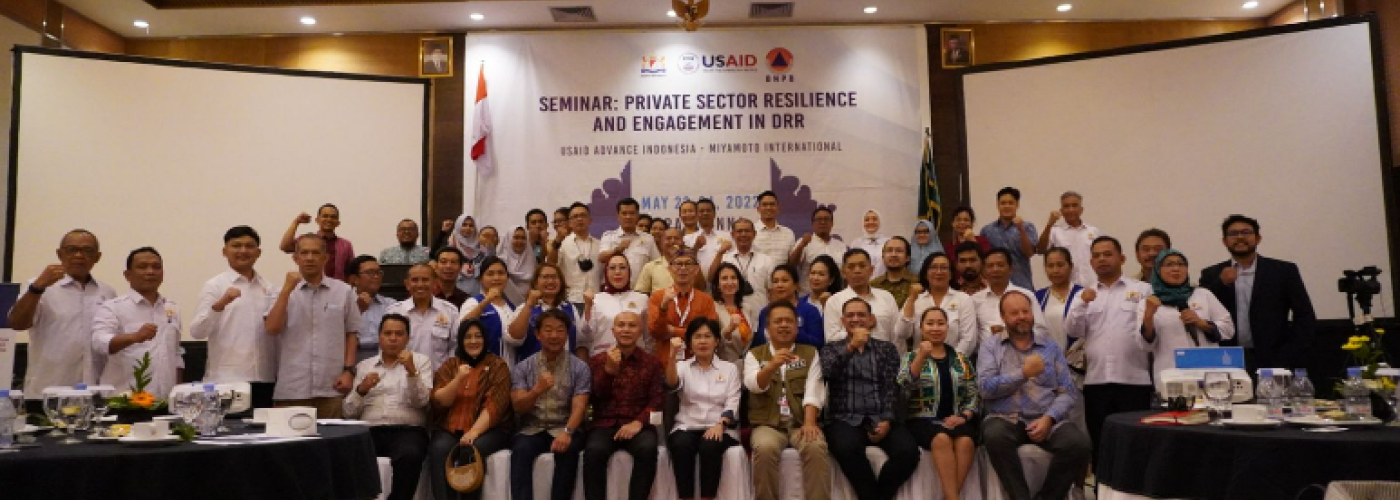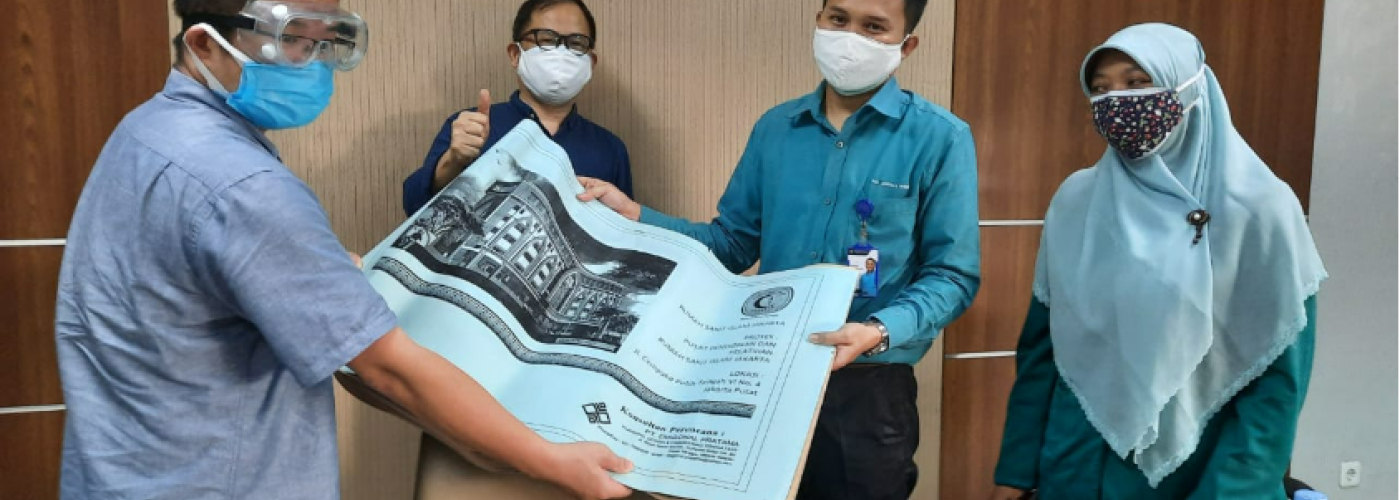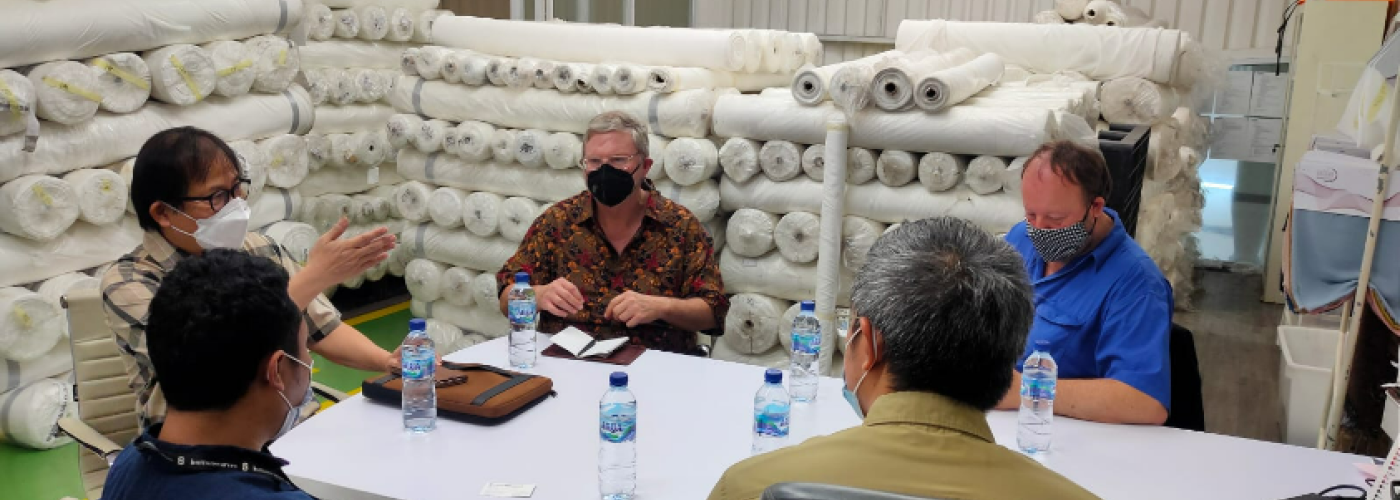Indonesia: Building SME Resilience to Prepare for the Next Disaster
Image

This blog was written by Rachel Mullis.
When natural disasters strike, small and medium enterprises (SMEs) play an outsized role in keeping communities going. Unlike larger businesses, SMEs tend to be owned and operated by local residents who are rooted in their communities. Once the immediate danger from a disaster subsides, SMEs are more likely to stay and provide business continuity that fuels immediate recovery and lasting social and economic impacts.
There’s just one hitch: SMEs can only contribute to post-disaster recovery if they remain in business. Smaller enterprises in disaster-prone areas generally don’t have disaster preparedness plans in place, nor do they invest in risk reduction and risk transfer mechanisms. In fact, small companies often perceive their risk from a disaster to be quite low. As a result, they do not make preparations that could help them weather down time, minimize losses, and ensure business continuity.
In Indonesia, where the risk of natural disasters such as earthquakes is exceptionally high, the U.S. Agency for International Development (USAID), through the ADVANCE activity, partnered with the national and regional disaster management authorities for Indonesia and the Jakarta capital city region. The goal was to improve planning and disaster preparedness for SMEs to reduce injuries, deaths, and long-term social and economic disruption.
The activity centered on the role of small and medium-sized businesses as anchors of resilience in communities hit by disaster. By maintaining business continuity, businesses not only need less support after disasters, but contribute to the overall community weathering and responding to the event. The result is less social and economic damage, as well as less disruption to the local market ecosystem. In turn, less disruption to local markets boosts recovery efforts and sustainability. SMEs are well-placed to continue to serve their local markets and communities, sustaining livelihoods long after humanitarian actors depart.
Image

Global multi-hazard engineering and disaster-risk management firm Miyamoto International conducted a study and piloted an integrated earthquake preparedness, response, and recovery model for Jakarta. Miyamoto recruited 11 businesses for the pilot and provided a customized assessment of their risk. Using structural assessment data analysis, Miyamoto evaluated the participants’ operational resilience, disaster management capabilities, and infrastructure. The firm used a technique known as disaster imagination, which involves imagining or visualizing the possible effects of hazards such as earthquakes, to help businesses plan what they will do under varying degrees of advance notice of the quake. Miyamoto then developed personalized lists of upgrades and revised procedures to lower each business’ risk profile.
“The goal was to develop and provide the vulnerability and risk data these businesses needed for decision making,” said Miyamoto Principal Sabine Kast. “It was a hyper-personalized methodology, packaged so that it was understandable in practical and technical terms.”
Several businesses went on to make low- and no-cost investments in earthquake preparedness. Some have completed or are budgeting for larger renovation projects.
One pilot participant was Avtech Adventure Technology, a sports equipment vendor in Jakarta. "I’ve now formed a tactical team so if an earthquake occurs they'll know what to do," said Avtech's Fitri Agustina. "We've rearranged goods in the warehouse... to reduce potential hazards."
Another participant, the PT Malindo Feedmill poultry and animal feed company, took matters a step further. "We've already completed renovations based on... the building assessment," said Malindo's Pandu Indra Ferdinan, adding they have also revised procedures to prevent storing materials near emergency exits.
Building on the initial pilots, USAID and Miyamoto engaged the Indonesian Chamber of Commerce and Industry (KADIN). KADIN soon grew excited about the possibility of extending disaster risk management as a service to its members across the country.
"The interest of (KADIN's) members is high, and we look forward to further collaboration with all," said Suryani Motik, Head of KADIN's newly formed Social and Disaster Management Unit.
The partnership has been so successful that KADIN now represents the private sector in national disaster risk management policymaking. Looking ahead, KADIN hopes to expand its disaster risk education to SMEs in several provinces, fueled by the resources and tools developed by USAID and Miyamoto.
“When we talk about ‘private sector engagement’ for Disaster Risk Management, for small businesses they may need some technical assistance before they can be program partners. We need to increase their awareness and resilience, just as we would a household or community. Once a small business understands their risk and exposure to hazards, and takes measures to manage these, they are more willing and able to help promote the same in the surrounding community and among their peers,” said BHA Regional Advisor, Harlan Hale.
As the world faces more intense and frequent natural disasters in the face of climate change, USAID is supporting disaster risk management in vulnerable regions around the world. In emerging markets, where small and medium-sized enterprises comprise seventy percent of the job market, USAID seeks to incorporate the voices and needs of the local private sector in order to strengthen the resilience and wellbeing of disaster-affected communities.
Image

About the Project
USAID’s Bureau for Humanitarian Assistance (BHA) provides life-saving support to the world’s most vulnerable and hardest-to-reach people. BHA takes a holistic approach to humanitarian aid, providing assistance before, during and after a crisis—from readiness to response, relief and recovery. USAID ADVANCE supports the mandate of Indonesia’s National Disaster Management Authority (Badan Nasional Penanggulangan Bencana, or BNPB) as well as the Regional Disaster Management Agency (Badan Penanggulangan Bencana Daerah, or BPBD) of the Jakarta Capital Special Region (Daerah Khusus Ibukota Jakarta, or DKI Jakarta).
USAID ADVANCE is implemented by Miyamoto International, a global multi-hazard engineering and disaster-risk management firm that builds resilience to sustain economies, safeguard communities and safe lives around the world. Miyamoto’s mission is to make the world a better, safer place, and it has worked in Indonesia at the request of partners since 2007 (including West Sumatra earthquake response).

